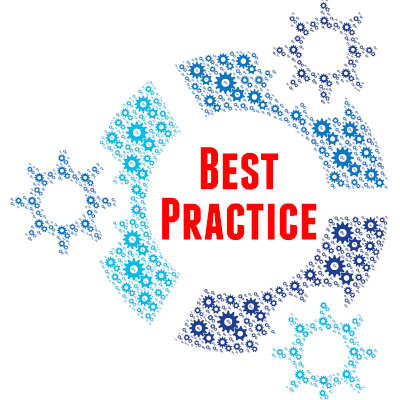Argentum IT LLC Blog
If you are a frequent reader of our blog, you will notice that “best practices” is a term that is used generously. That is because there are certain ways to go about things when you are working with technology. Today, we wanted to go over what the term actually means and why they are important when managing your business.
Over a quarter of all data breaches happen to small businesses. The cost of a data breach is really prohibitive to your business’ operational and financial health. To keep your business’ data and infrastructure free of threats and relatively secure, small businesses will need a combination of useful technology tools and well-designed strategies. Let’s take a look at several steps your small business can take to secure itself from digital theft.
If fortune smiles on your company, you won’t ever have to deal with what we are about to discuss: ransomware. For the past several years ransomware has been a major issue for businesses, governments, and individuals. Today, we will talk about ransomware, how there are different strategies, and how some people want to put a ban on ransomware payments.
Of all the contentious topics in the workplace, employee monitoring is among the most divisive. As an authority figure in your business, it is only natural that you would want to make sure that your team is working diligently—especially as they are working remotely. That being said, there are some lines that cannot be crossed you should be aware of. Let’s discuss the concept of monitoring your employees and what cannot be done.
Nowadays, a business’ network security needs to be amongst its top priorities if it is to have any chance of operating without undue risk of data breaches and other incidents. Admittedly, managing this sounds like a Herculean task, but a few relatively simple implementations can help give your security a considerable advantage as you lock down your business’ future. Here, we’ve reviewed four such areas you need to focus on.
Owners of Nintendo’s Switch console should know that, as per an announcement from Nintendo, the battery life of their device could be negatively impacted if the device isn’t charged up at least every six months. While this may not be the kind of news you’d expect to find on a business technology blog, it does open the door to a bigger, more pertinent topic: should devices that aren’t used very often be kept charged up?
Security is a major part of any business, and if there isn’t a diligent approach to the implementation of it, you can be left with huge holes in your network. This month, we thought we would discuss some of the best practices you can take to make sure that your organization’s security is in the best possible position to protect your digital resources.
While email is an indispensably useful tool in the office, it can quickly become a time-sink if finding the right messages to read and respond to becomes an overbearing responsibility. Fortunately, there is a simple solution to remedy this that, after spending some time learning about the full capabilities of your email platform, can once again make your email the useful tool it is meant to be.
Many workplaces have started the processes necessary to safely return their employees to typical operations. However, this is going to involve no small amount of preparation in terms of your business’ technology and proactive planning. Let’s consider the different approaches that you could take as you resume operations in a way that helps protect your team while still enabling work to be done.
It doesn’t take a deep thinker to know that your business is extremely limited without its data. There are dozens of antivirus solutions on the market for this very reason. One of the best ways to protect your digital assets is to back up data using a reliable backup platform. In today’s blog, we’ll go over a few basic considerations to make if you want a data backup that you can trust.
Modern society is greatly focused on the virtue of hard work, of productivity. This has led to a kind of unspoken prejudice against breaks in the workplace, that any break that is not earned is the sign of an unproductive employee. As it turns out, the opposite is true. This week, we’re going over how you can turn your breaks into a way to accomplish more in the workplace.
Remote work has been crucial to many businesses as they work to sustain themselves throughout the COVID-19 pandemic. However, as businesses have adopted these new methods of operation, it has become clear that remote work is likely to be much more than a survival tactic moving forward. Let’s look to a recent survey to see how remote work is influencing these businesses.
As businesses of all kinds either actively reopen or find themselves swiftly approaching that point, the ongoing status of COVID-19 guarantees that these organizations must carefully evaluate how to proceed. With numbers rising at the time of this writing, it is important that you establish the means to protect your employees from infection and illness.
A business without well-trained employees is one that is always on the precipice of disaster. With the threat landscape the way it is, you need your staff to know how to properly maneuver around company IT and you need to ensure they know how to protect themselves and the company in a digital environment. Today, we will take a look at some strategies to promote end-to-end security at your company.
The way people talk about cybersecurity, it’s as if it is something like a television or a new phone: something you can just buy. That’s not the truth. When you are seriously looking at how you can keep unwanted entities off your network, while having control over what you do with your technology, you need to look at it as three levels of security.
Protecting your online accounts, your data, and your customers’ information is now more important than ever. Industry and state-mandated compliances are now forcing businesses to tighten their cybersecurity, and it’s critical that every human being on the Internet take their own personal security seriously. This guide is designed to provide the best practices for strong passwords.




















